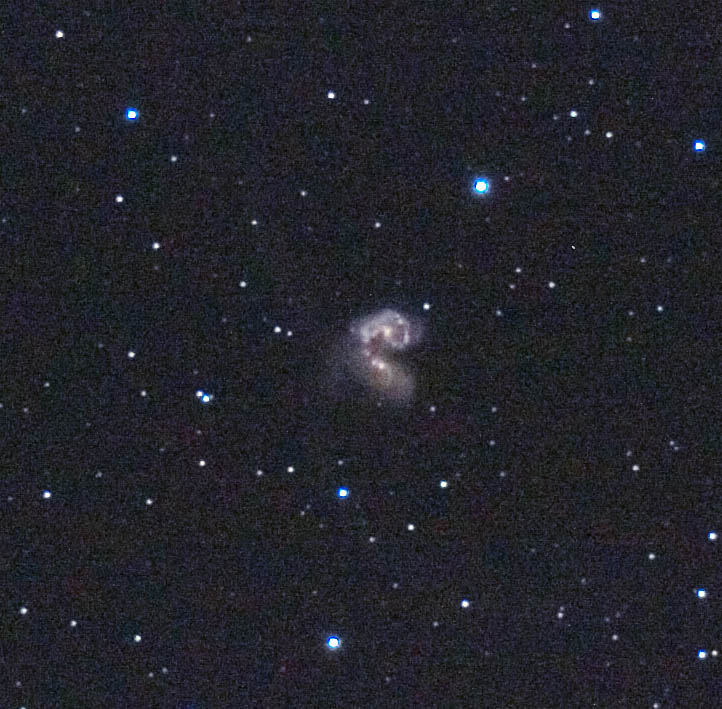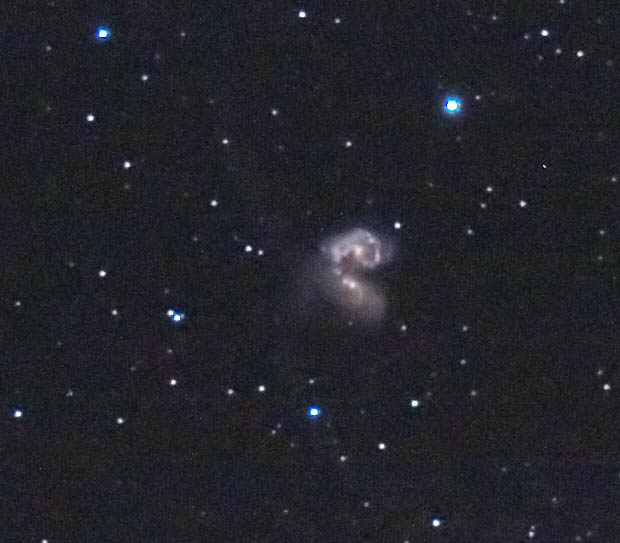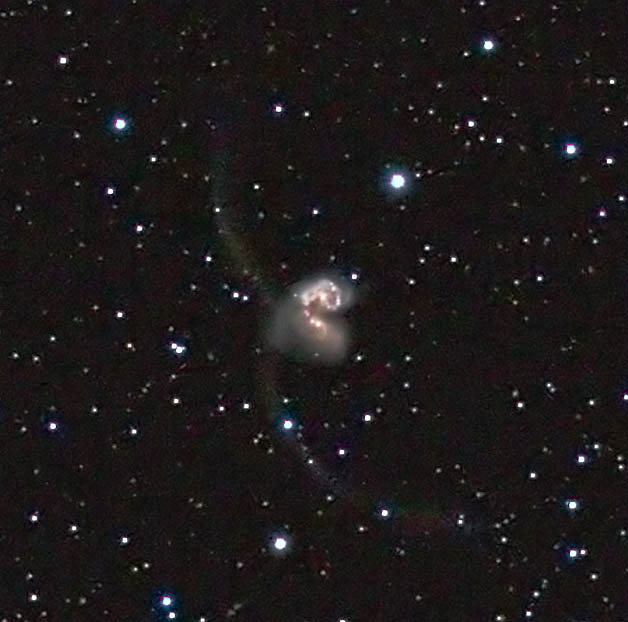
Note the Noise: Antennae Galaxies: NGC 4038 - 4039
This shows how the process of digitally combining astronomy images can reduce noise and bring out areas that otherwise are too dim to see. Below: a relatively noisy single image, 4 minutes exposure at ISO 800.


The crop above is from the 1st image, but reflects one application of a noise reduction tool ("Neat Image") at default settings. I think its done a pretty good job. Neat Image allows to you specifically sample the noise a featureless area of your image. This works well for astronomy images that have some space between stars, such as this one.

The bottom image is a digital combination ("stack") of 10 x 4 minute = 40 total minute exposures . More exposure would will be better (as would better focus and tracking- the usual stuff!)! The above view shows the dim, antenna trails, along with some of the noise and processing artifacts due to extreme image stretching.
There is a mathematical formula* that applies: Generally, the image noise is reduced by the square root of the number of exposures.
*I hope someone will correct me if the formula wrong ;-)
Takahashi TOA 130 (a 5" APO refractor) and Canon EOS D20a. My current image processing workflow is here.
The "normal" antennae galaxy page is here.
Dick Locke's HAS Astrophotography Index
The other HAS Pix from 3/25/2006 are here.
| Galaxy Home | Astronomy Pictures: Dick Locke's Astrophoto Gateway page.... | Messier Pictures, Images by Dick Locke |
| Images Home |
Copyright © 2006, Dick Locke. All Rights Reserved.
Contact and Image Use Information